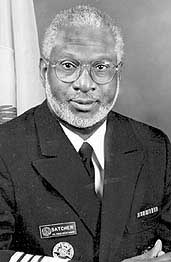national
AIDS spreading among American Indians
Reservation infection rates climb
Published Thursday, 01-Jan-2004 in issue 836
PHOENIX, Ariz. (AP) — The remoteness of many American Indian reservations largely protected tribes from the full force of HIV and AIDS for years, but that has begun to change.
In 2001, then-Surgeon General David Satcher warned AIDS was a ticking time bomb for American Indians. Now, Indian infection rates are 1.5 times that of white Americans.
More than 30 new cases were identified on the Navajo Reservation this year, including the first documented cases of transmission on the reservation.
The Centers for Disease Control and Prevention is closely tracking the numbers.
Cases for all groups, including American Indians, peaked in 1996 and then dropped with the introduction of new medications. But cases for all groups are on the rise again.
American Indians are infected with AIDS at a rate of 11.7 per 100,000, more than 11/2 times the rate for whites and twice the rate for Asians, according to the CDC. The highest infection rates nationally are among blacks and Hispanics.
Satcher said the death rates for American Indians are also higher than those of some other groups.
“I think it’s a combination of later diagnosis and less access to aggressive treatment,” Satcher said.
Jeanne Bertolli, an epidemiologist in the CDC’s National Center for HIV, STD and TB Prevention, said HIV and AIDS may be even more devastating in American Indian populations because it comes on top of other health risks, including higher rates of diabetes, alcoholism, homicide, suicide and accidental death.
“Native people are vulnerable,” Bertolli said. “The conditions exist that can allow the spread of the disease, including high rates of sexually transmitted infections and illicit drug use.”
Dr. Jonathan Iralu, chief clinical consultant for infectious disease for the Navajo Area of the Indian Health Service, said 24 new HIV cases were diagnosed on the reservation last year. Fifteen cases were diagnosed the year before.
Almost all the cases were sexual transmissions, he said.
“A year ago there was evidence people were catching the virus on or near the reservation,” he said. “Before that we blamed the cases on Phoenix, Albuquerque or Los Angeles.”
The increasing number of cases worries Iralu, as does the spread to women, because it signals a widespread problem.
“Heterosexual transmission is a worrisome pattern in the developing world,” Iralu said. “It’s a sign of more general local spread, and it tells us that there’s a risk of congenital spread from mother to child.”
|
|
Copyright © 2003-2025 Uptown Publications


